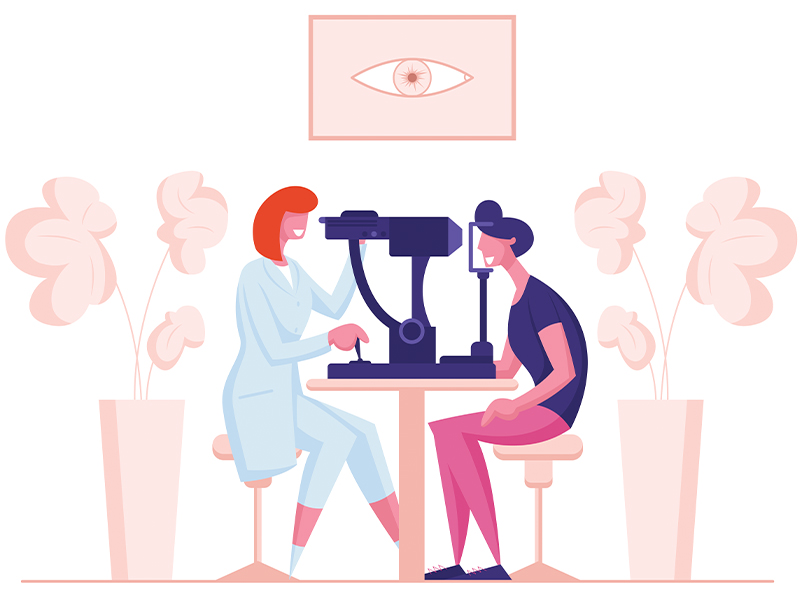

Employees in most sectors are experiencing an exponential increase in the amount of time they spend in front of screens during work hours, so updates to vision benefits are long overdue.
“Current vision coverage isn’t sufficient and it would be great to see some changes,” says Dr. Harry Bohnsack, an optometrist based in Fredericton, N.B. “It’s hard to believe, since the 1990s, [vision benefits] have remained virtually unchanged.”
The average employee benefits plan offers an annual amount of up to $250 to spend on vision care, says Bohnsack, noting that may only cover a portion of what a plan member needs. Lenses alone may use up the majority of the allowance, with single vision lenses typically ranging anywhere from $100 to $500, depending on how complex the lens is. And if someone requires progressive multifocal lenses, the price can increase up to $1,000 for a sophisticated pair.
Read: Sounding Board: Is it time to update vision care benefits plan design?
Denise Balch, principal consultant and president of Connex Health Consulting, also believes vision care benefits require a major overhaul. “I think where the plan design falls down is there’s no provision if somebody has a more serious visual condition. If somebody wants fancy designer frames, then that’s their dollar. . . . But I would put an allowance — a higher maximum — for lenses for someone who has additional visual acuity issues.”
Extended screen time
Most job duties, along with meetings that were once in person, are now taking place on the computer, so the added screen time can pose major problems for employees’ vision, says Bohnsack.
“We normally blink about 12-times a minute and, when you focus on the computer screen, you blink less often, as little as four-times per minute. This blinking motion is essential for moving tears onto the surface of the eye and keeping it hydrated. So dry eyes can be caused from extended screen use and we’re often not really aware of it.”
Read: Focusing on vision care benefits in year two of the pandemic
By the numbers
• 13 — The average number of hours remote employees spend per day staring at screens
• 68% — The percentage of remote workers who noticed new eye or vision symptoms since working from home
• 45% — The percentage who said their eyesight has worsened to the point they needed a new eyeglass prescription
Source: All About Vision survey, June 2022
From a well-being perspective, employers can help reduce some of the negative aspects of increased screen time, says Balch, including allowing more breaks and in-person meetings and having sufficient coverage in place for any treatment that’s required.
In addition, people over the age of 45 are at an increased risk for vision problems and often require a separate pair of glasses for looking at the computer screen, says Bohnsack. In many cases, he recommends a separate pair of glasses for computer use, which would have a focus for the computer as opposed to a focus for distance. For a lot of people over age 50, he notes, a separate pair of glasses makes a huge difference.
“The need for two different pairs of glasses means that, a lot of the time, the benefits really aren’t going to cover everything that person needs. There may be additional visits to try to sort out challenges with people’s dry eye condition. It can make a huge difference in the person’s comfort level as well if they’re getting the proper dry eye treatment, which can consist of a number of different things, not just eye drops.”
Balch suggests employers consider the needs of employees who are of a certain age and may not have experienced a lot of screen time prior to working from home. In addition, she says a second pair of glasses for the computer can go a long way to ensure the employee is comfortable and likely more productive.
Read: Employees want more comprehensive benefits coverage: survey
Myopia, or nearsightedness, is another concern with increased screen time, she adds, noting her own vision was personally affected with the onset of the coronavirus pandemic and working from home. She had previously worn progressive lenses, but once she was spending more time on her computer she realized those glasses weren’t good enough.
“With progressives for seeing close up, you have to look further down, so I found I was working with my head up in an awkward angle and it gave me a neck ache. And it didn’t make the visual experience of looking at a screen very pleasant because half the time it was blurry.”
Medical advancements
There’s a slight stigma around vision benefits, says Balch, noting some benefits plan sponsors are hesitant to increase the vision maximum thinking the money would just go to designer frames. But there are many advancements in diagnostics and monitoring that aren’t covered under the comprehensive exam fee, she adds.
“It’s a shame that it’s so hard to get attention to the fact that there’s some really important screening, diagnostic and monitoring tools for serious diseases like glaucoma, diabetic retinopathy and macular degeneration, as well as ocular surface disease.”
Read: Have your say: Is vision care coverage too low?
Bohnsack agrees, highlighting the lack of knowledge about the medical and technological advances that have occurred in vision care. If these were covered by benefits plan, he believes it would lead to considerable savings in the long term.
“If the person is getting a thorough examination with the latest imaging technology, intervention can be done to treat conditions like glaucoma and macular degeneration at an earlier stage, saving the person’s sight, but also costs [in the long run].”
Sadie Janes is an associate editor at Benefits Canada.
